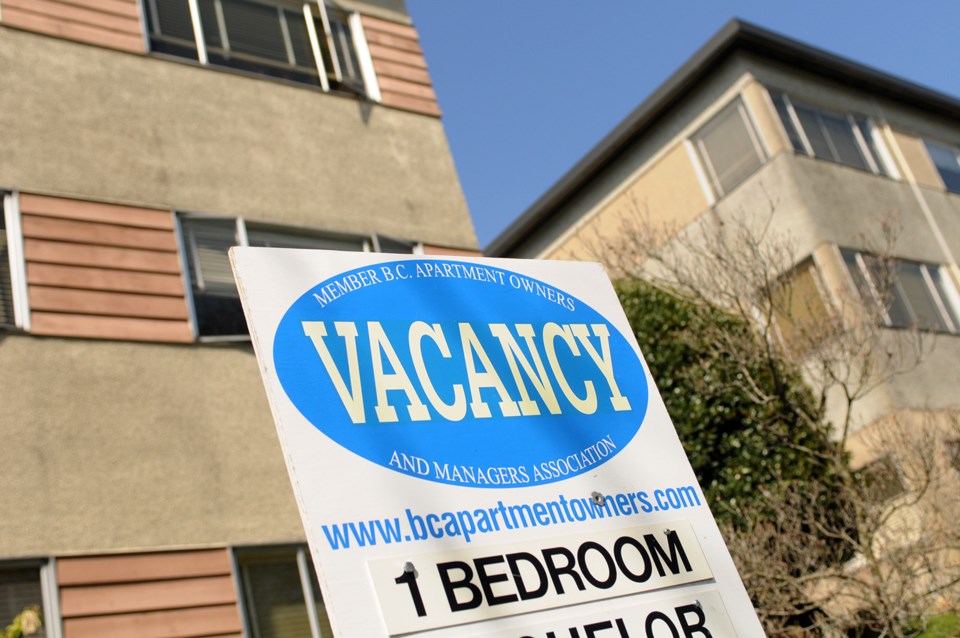The rental vacancy rate has eased slightly across all of Metro Vancouver, partly driven by a big jump in vacancies in Burnaby, according to new annual data released November 28 by the Canada Mortgage and Housing Corporation (CMHC).
The federal housing agency said that over the past year vacancies in Burnaby have risen to 2.0 per cent of total rental housing stock, up from a very low 0.6 per cent in fall 2017.
That has helped ease Metro Vancouver’s overall vacancy rate, which has slackened to 1.0 per cent this year, from 0.9 per cent in 2017.
The average rent in Burnaby rose 5.3 per cent to $1,238 (all apartments). One-bed rents averaged $1,149, an annual rise of 5.5 per cent, while two-beds were up 4.6 to $1,466. These price rises agree with recent reports that Burnaby rents have increased by more than inflation over the past year.
CMHC also broke down vacancies and rents by area. Central Park/Metrotown was revealed to be the leader in easing rental vacancies, with a flood of new supply taking that area’s rate to a generous 3.2 per cent, a huge leap from 0.7 per cent last year. Southeast Burnaby rose from a low 0.5 per cent last year to 0.8 per cent in 2018, and Burnaby North eased to 1.0 per cent, from an incredibly tight 0.3 per cent one year ago.
The priciest Burnaby rents were found in North Burnaby, at $1,299, which is up 3.5 per cent from a year ago. Southeast Burnaby had the lowest rents, at an average of $1,094, but that was the city’s highest annual jump, up 7.6 per cent.
Outside of Burnaby, New Westminster also saw rates ease from 1.1 to 1.6 per cent, although average rents rose more than eight per cent year over year, with high-priced new-build apartments coming on stream. North Vancouver (District), West Vancouver and Richmond also saw slight vacancy rate increases this year. This drove Metro Vancouver’s overall vacancy rate up to 1.0 per cent.
Vancouver, on the other hand, saw vacancy rates drop from 0.9 per cent to 0.8 per cent this year. Surrey joined Vancouver in a tightening rental market, dropping to a very low 0.4 per cent, compared with 0.6 per cent last year. Surrey has recently seen the launch of the first new rental purpose-built building in the city in more than three decades.
The CMHC said that a strong Metro Vancouver economy and the high cost of entry-level homeownership is fuelling rental demand.
Check out the full Metro Vancouver report to see vacancy rates and rental prices by neighbourhood.


